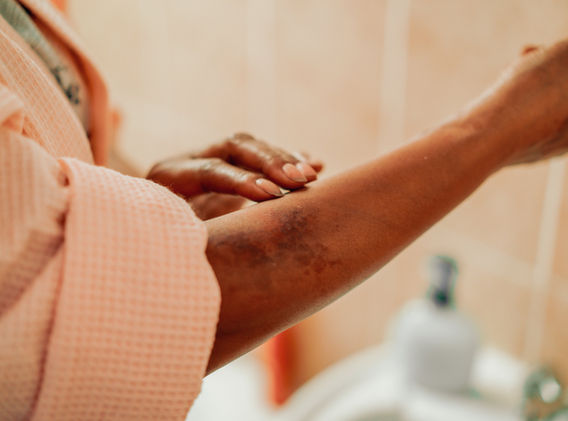Media assets
Why Spot Leukaemia?
Children ask why a lot, which is why this September we are asking you to channel your inner 5-year old and ask why. Why am I so tired? Why am I feeling weak and not like myself? Why do I have bruises?
Why Spot Leukaemia? Stills
Why Spot Leukaemia statistics:
September is Blood Cancer Awareness Month. Leukaemia is a blood cancer and just under 10,000 people are diagnosed with leukaemia each year in the UK. Leading UK leukaemia charities, Leukaemia Care and Leukaemia UK, are raising awareness of the signs and symptoms of leukaemia through their #SpotLeukaemia campaign. If you are experiencing any of the following symptoms and you think something might not be right, contact your GP and ask for a blood test.
The most common symptoms of leukaemia are:
-
Fatigue (extreme tiredness)
-
Bruising
-
Unusual bleeding
-
Repeated infections
-
Feeling weak or breathless
-
Fever or night sweats
-
Bone or joint pain
Why Spot Leukaemia?
-
28 people receive a leukaemia diagnosis every day in the UK – that’s just under 10,000 every year.
-
Nearly 5,000 die from the disease every year and overall survival stands at just over 50% - making it one of the most deadly forms of cancer.
-
Early diagnosis could be key to effective treatment and improving outcomes, yet public awareness of the signs and symptoms of leukaemia is extremely low across the UK.
-
Only 14% of British adults can recognise the common signs of leukaemia (YouGov poll conducted by Leukaemia Care and Leukaemia UK, July 2024)
-
86% of British adults cannot recognise the symptoms of leukaemia (YouGov poll conducted by Leukaemia Care and Leukaemia UK, July 2024), which is often diagnosed too late.
Key Stats
-
Leukeamia is a type of blood cancer – which despite being the fifth most common type of cancer in the UK, is the third biggest cause of cancer deaths.
-
Every day, 28 people in the UK – just under 10,000 every year - receive the devastating news that they have leukaemia (Leukaemia (all subtypes combined) statistics | Cancer Research UK.).
-
Despite progress, only half (53.5%) of leukaemia patients live longer than five years after their diagnosis. (CRUK, England only).
-
Leukaemia is the most common type of childhood cancer, accounting for around 33 per cent of all cancers in the under 14s. Over 570 children are diagnosed with leukaemia every year in the UK (CRUK, ONS, 2016-2018)
-
It also significantly impacts those over 75, with 38% of all new diagnoses occurring in this age group (CRUK).
-
50,000 people in the UK are currently living with leukaemia and sadly nearly 5,000 (4730) of those die of the disease every year. (CRUK)
-
Leukaemia has one of the highest rates of emergency diagnosis, with 37% of cases being diagnosed in an emergency setting. This means that patients are being diagnosed when it’s too late and they are often too unwell to cope with the treatments for leukaemia, which are known to have a harsh effect on the body. This is compared with just 3% in breast cancer and 7% in prostate cancer (Forgotten fifth report).
-
The highest emergency presentation rate for any cancer type is acute lymphoblastic leukaemia (66%), the most common type of childhood cancer.
-
The incidence rates for leukaemia are projected to rise by 5% between 2014 and 2035, to 19 cases per 100,000 people by 2035.
_edited.png)













